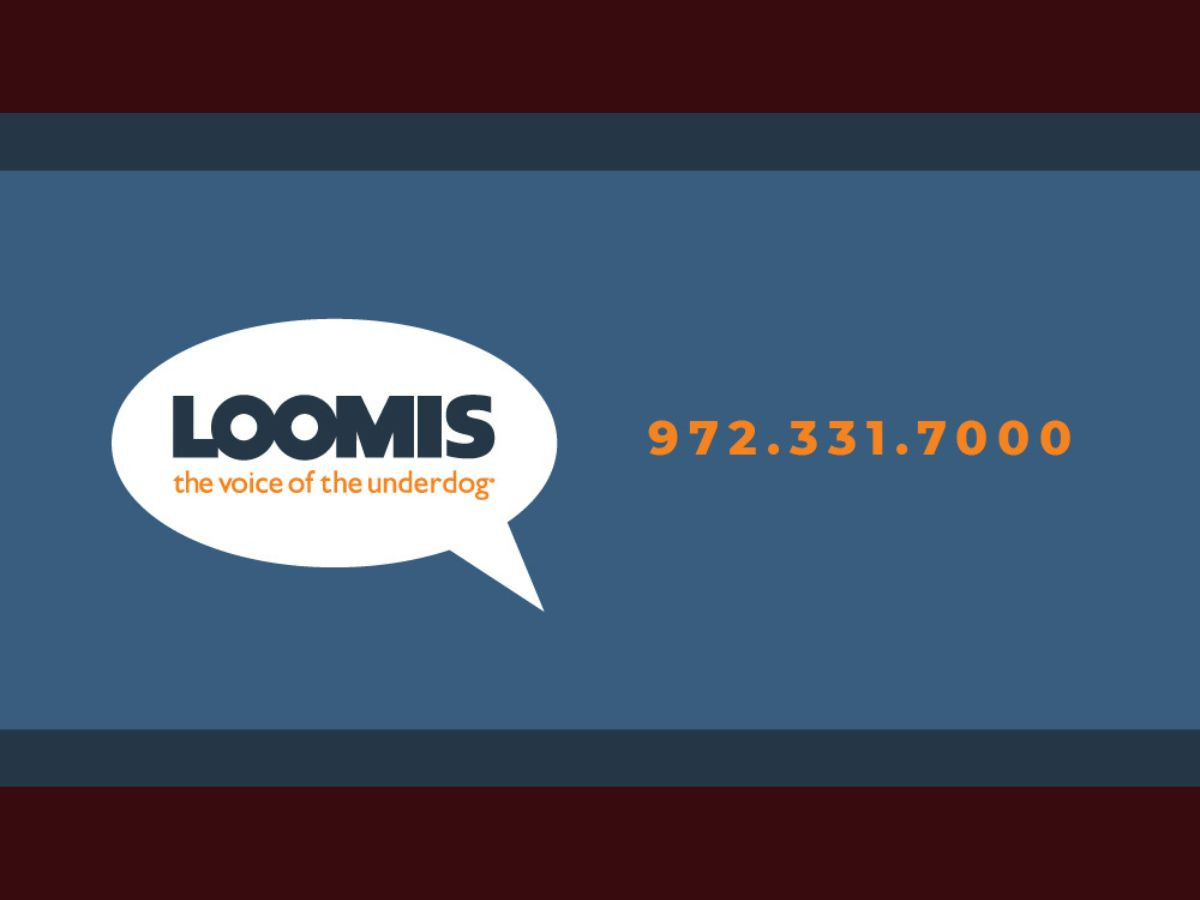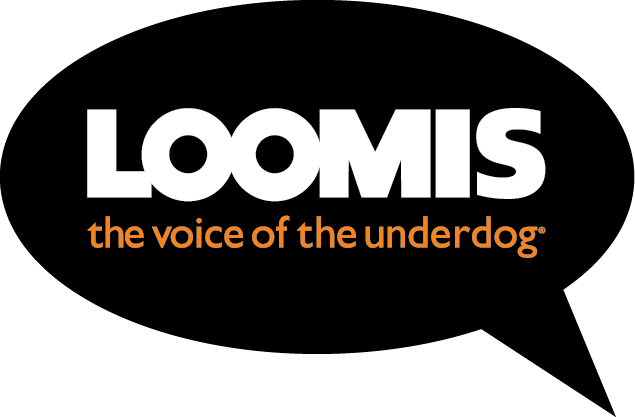Achieving Underdog Brand Success: Key Strategies & Stories
Underdog brand success is a fascinating phenomenon that has captured the attention of marketing professionals and consumers alike. This press release delves into the unique advantages these challenger brands possess, which enable them to disrupt well-established markets and carve out their niche. The LOOMIS Agency, a branding agency in Dallas, TX explores how underdog brands embrace innovation, adapt quickly with limited resources, and maintain their success as they become market leaders.
Some notable examples of companies that have achieved underdog brand success are Liquid Death Mountain Water Beverage Company, Chick-fil-A, Trader Joe's, and Lush Cosmetics. Each case study highlights different aspects of what makes an underdog thrive in today's competitive landscape.
LOOMIS also discusses strategies for building a strong company culture within an underdog organization and leveraging limited resources effectively for growth. Finally, this article concludes with insights on maintaining long-term success while staying true to core values amidst increased competition and changing dynamics.
Underdog Brands: The Advantages of Being Small but Mighty
Underdog brands have unique advantages that allow them to disrupt markets dominated by larger players.
Niche Segments: Finding Success in Specialization
By targeting niche segments, underdogs can offer specialized products or services that cater directly to consumer needs.
Innovation and Risk-Taking: The Keys to Success
Successful underdog brands embrace innovation and take risks, challenging industry norms and experimenting with new ideas.
Agility, Innovation, and Efficiency: Doing More with Less
- Agility: Underdogs must remain agile to adapt quickly to changing market conditions.
- Innovation: Limited resources force underdogs to think outside the box and develop innovative solutions.
- Efficiency: Operating with a lean team and budget means underdogs must maximize output while minimizing costs.
These advantages allow underdog brands to dominate niche markets and compete effectively against established industry giants.
Examples of Successful Challenger Brands
Challenger brands have disrupted industries by thinking differently, taking risks, and creating cult-like followings among consumers. Notable examples include Liquid Death Mountain Water Beverage Company, Chick-fil-A, Trader Joe's, and Lush Cosmetics.
Liquid Death Mountain Water Beverage Company - Murder your thirst.
Liquid Death uses aluminum cans instead of plastic bottles, making a statement against single-use plastics while providing high-quality mountain water to quench your thirst. Their edgy marketing campaigns have helped them stand out in a crowded market.
Chick-fil-A - Values-driven fast-food chain success story
Chick-fil-A's commitment to quality, customer service, and values has enabled them to stand out from the competition in an otherwise crowded market. Despite its unorthodox practice of closing on Sundays, Chick-fil-A has still managed to remain successful in a highly competitive industry.
Trader Joe's - Disrupting the grocery industry with unique offerings
- Niche products: Trader Joe's offers exclusive private-label products that cater to specific consumer needs.
- Affordable prices: By working directly with suppliers, Trader Joe's offers high-quality products at lower prices.
- Friendly atmosphere: The company's Hawaiian-shirt-wearing employees create a welcoming environment for shoppers who appreciate personalized service.
Lush Cosmetics - Revolutionizing cosmetics through ethical practices
Lush Cosmetics has garnered a reputation for sourcing components ethically, testing without animal cruelty, and utilizing eco-friendly packaging. Their commitment to these values has attracted a loyal customer base that appreciates their unique approach to beauty products. Lush also focuses on innovation by regularly introducing new product lines while discontinuing older ones, keeping customers engaged and excited about what's next.
Building a Strong Company Culture as an Underdog Brand
Underdog brands can beat established competitors by fostering innovation and passion through a strong company culture.
Hire People Aligned with Brand Values for Better Execution
Challenger brands need team members who share their values to execute strategies effectively.
Establish Regular Communication Channels between Management & Staff Members
Open lines of communication between management and staff members are essential for a strong company culture.
Passion & Energy Drive Growth in Young Challenger Companies
Enthusiasm fuels growth by inspiring innovative thinking and encouraging risk-taking behavior necessary for disrupting established markets.
Tips for Building a Strong Company Culture:
- Define your values: Clearly articulate what your brand stands for and ensure all employees understand these principles.
- Hire wisely: Look for candidates who not only have the necessary skills but also share your brand's values and vision.
- Promote open communication: Encourage dialogue between management and staff members by establishing regular meetings or check-ins where ideas can be shared freely.
- Celebrate successes: Recognize employee achievements both big and small, fostering a sense of pride in individual accomplishments as well as overall company growth.
For example, Chick-fil-A hires employees based on their commitment to service excellence, and Trader Joe's has "Captain Meetings" to discuss feedback and address issues head-on. Lush Cosmetics' commitment to ethical practices and sustainability drives its success.
Leveraging Limited Resources Effectively for Growth
Challenger brands should focus on identifying specific customer needs and solving them efficiently to maximize returns and minimize risks.
Focusing on Customer Needs & Solving Them Efficiently
Underdog brands need to prioritize understanding the unique pain points of their target audience and developing solutions that cater specifically to those needs.
Trader Joe's success is built on offering high-quality products at affordable prices in a fun shopping environment tailored towards health-conscious consumers.
Experimenting with Different Strategies in a Calculated Manner
Underdog brands should experiment with different strategies but do so cautiously by testing new ideas on smaller scales before committing significant resources.
Chick-fil-A initially concentrated on chicken sandwiches as a small fast-food chain, and after proving successful in that market segment they expanded their menu offerings.
Maximizing Returns by Targeting Niche Markets
- Narrow Focus: Challenger brands can benefit from concentrating their efforts on specific niches where they have identified unmet consumer demands or areas ripe for disruption.
- Personalized Approach: By catering to the unique needs of their target audience, underdog brands can create personalized experiences that resonate with consumers.
- Agility & Adaptability: Smaller companies have the advantage of being more agile than larger competitors, allowing them to quickly adapt their strategies in response to market changes or new opportunities.
Leveraging limited resources effectively for growth involves focusing on specific customer needs, experimenting cautiously with different strategies, and targeting niche markets where underdog brands can establish themselves as industry leaders.
Maintaining Success as an Underdog Brand Becomes Market Leader
As an underdog brand that has become a market leader, it's crucial to stay focused on what got you there and keep innovating.
Stay true to core values despite growth challenges.
Maintain consistency in messaging and product quality while adapting strategies to changing market dynamics to sustain long-term success.
Adapt leadership styles to changing dynamics.
Embrace flexibility to meet new challenges and opportunities during the expansion process, transitioning from micromanagement to empowering delegation-based approaches.
Ensure continued innovation amidst increased competition.
- Innovate relentlessly: Constantly improve existing products and services while exploring untapped markets and potential revenue streams.
- Embrace customer feedback: Actively listen to customers' needs and preferences and adapt offerings accordingly to foster brand loyalty and repeat business.
- Leverage partnerships: Form strategic alliances with complementary businesses to create synergies and share resources and knowledge for mutual benefit.
By utilizing these strategies, you can further develop the success that you have achieved and become an established leader in your field.
Conclusion
Success as an underdog brand is achievable with the right mindset, culture, and strategy.
Identifying niche segments, embracing innovation and risk-taking, and adapting quickly with limited resources is key.
Hiring people aligned with brand values for better execution, focusing on customer needs & solving them efficiently, and ensuring continued innovation amidst increased competition is also crucial.
If you’d like to hear Mike Sullivan, President and CEO of The LOOMIS Agency talk about these topics he was recently featured on the Business Confidential Now podcast with Hanna Hasl-Kelchner. You can listen here and you can connect with Mike on LinkedIn here.







